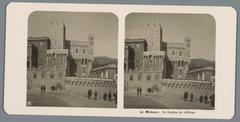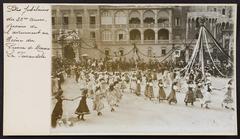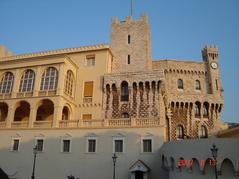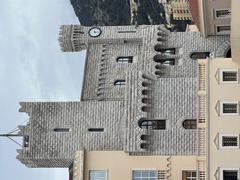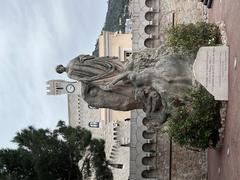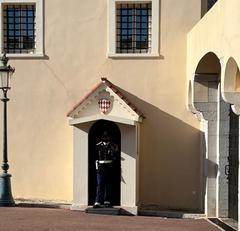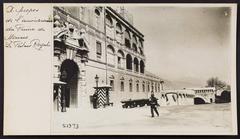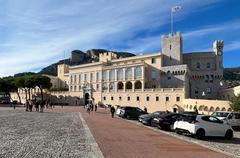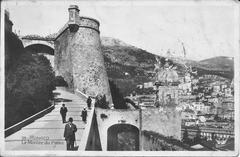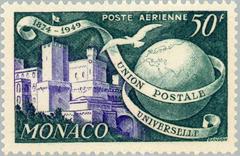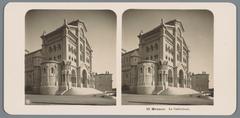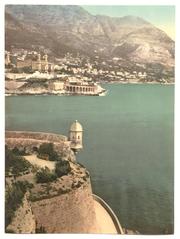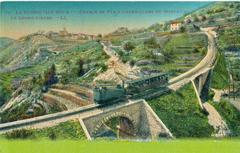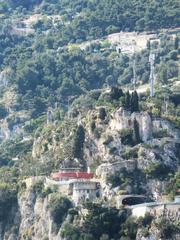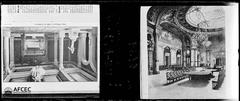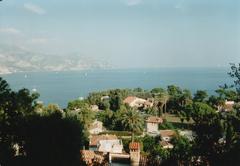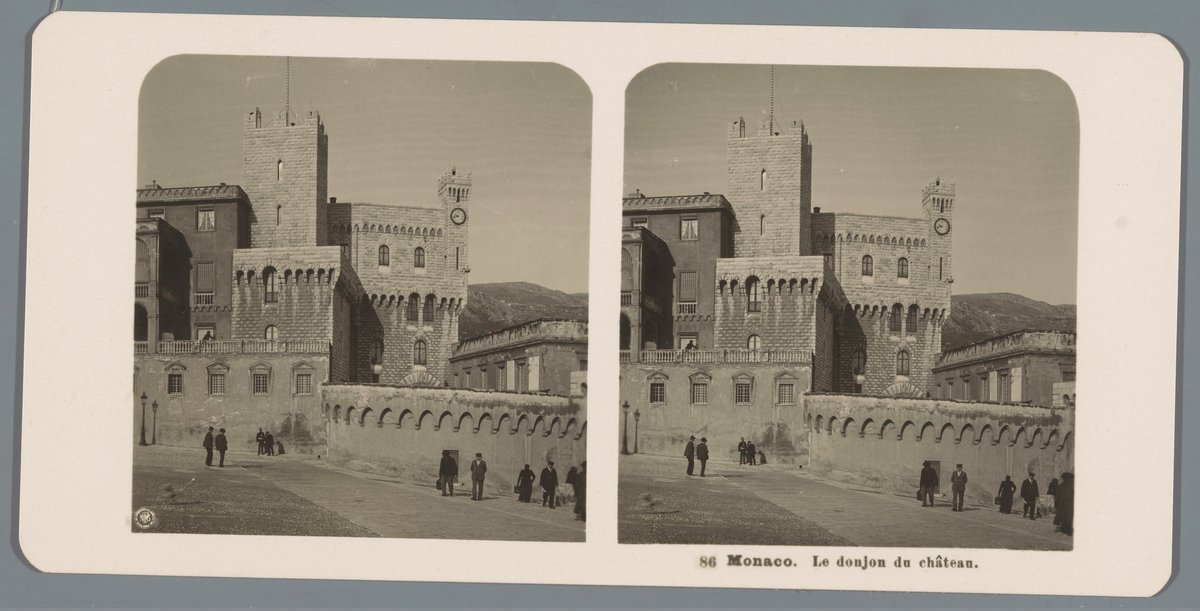
Prince’s Palace of Monaco: Visiting Hours, Tickets & Historical Significance
Date: 14/06/2025
Introduction
The Prince’s Palace of Monaco is a living testament to the principality’s rich history, architectural splendor, and enduring sovereignty. As the official residence of the Sovereign Prince and the seat of the Grimaldi dynasty since 1297, the palace is not only a symbol of Monégasque heritage but also an integral part of Monaco’s national identity. This guide provides a detailed overview of the palace’s historical evolution, architectural highlights, current visiting hours, ticketing information, and practical tips for visitors.
Table of Contents
- Introduction
- Early Origins & Genoese Foundations
- The Grimaldi Seizure & Dynastic Rule
- Architectural Evolution: From Fortress to Palace
- Renaissance & Baroque Influences
- Turmoil & Restoration: The French Revolution and Beyond
- The Palace in the Modern Era
- Visiting the Prince’s Palace: Hours, Tickets & Tips
- Symbolism & Cultural Significance
- Visitor Experience & Nearby Attractions
- Frequently Asked Questions (FAQ)
- Conclusion
- References
Early Origins & Genoese Foundations
The history of the Prince’s Palace of Monaco dates back to 1191, when the Republic of Genoa constructed a fortress on Le Rocher to secure its strategic harbor. By 1215, the stronghold was fortified with a rampart, four towers, and a curtain wall, forming the core of the present palace (Discover Walks; History Hit). These medieval defenses were essential during an era of frequent regional conflict among Mediterranean powers.
The Grimaldi Seizure & Dynastic Rule
A pivotal moment occurred on January 8, 1297, when François Grimaldi, disguised as a monk, seized the fortress for his family—a feat commemorated in Monaco’s coat of arms (Discover Walks). The Grimaldi dynasty established its rule, first as feudal lords and later as sovereign princes, maintaining the palace as their official residence for over seven centuries (History Hit). The palace withstood sieges and periods of foreign occupation but was consistently reclaimed and restored by the Grimaldis.
Architectural Evolution: From Fortress to Palace
Over the centuries, the palace transformed from a military fortress into a grand princely residence. In the 14th and 15th centuries, extensions and Renaissance-style façades were added, masking the medieval fortifications beneath. The palace’s wings, towers, and rusticated ground floors blend defensive and decorative elements, reflecting evolving architectural tastes (Discover Walks).
Renaissance & Baroque Influences
The 17th and 18th centuries brought significant embellishments. The iconic horseshoe staircase in the Cour d’Honneur and the Galerie d’Hercule, commissioned by Prince Louis I, are notable examples. The ceremonial rooms, inspired by Versailles, were adorned with paintings and tapestries, while the palace’s art collection grew (Monaco Tribune; History Hit).
Turmoil & Restoration: The French Revolution and Beyond
During the French Revolution, the palace suffered significant damage and the loss of many of its treasures. Restoration began after the palace was returned to the Grimaldis in 1814. Successive princes oversaw the retrieval of lost artworks and the refurbishment of interiors and exteriors. The Mirror Gallery, Blue Room, Throne Room, and Palatine Chapel remain highlights of this era (The Crazy Tourist).
The Palace in the Modern Era
Today, the Prince’s Palace serves as both a working royal residence and a major cultural attraction (Discover Walks). The state apartments open to the public seasonally, while open-air concerts and cultural events are hosted in the Cour d’Honneur. Recent restoration projects have uncovered and preserved Renaissance frescoes, further enhancing the palace’s historical value (Monaco Tribune; History Hit).
Visiting the Prince’s Palace: Hours, Tickets & Tips
Visiting Hours
The palace is open seasonally, typically from early April to mid-September. For 2025:
- April 2 – June 30: 10:00 AM – 5:00 PM (last entry), closing at 6:00 PM
- July 1 – August 31: 10:00 AM – 6:00 PM (last entry), closing at 7:00 PM
- September 1 – 14: 10:00 AM – 5:00 PM (last entry), closing at 6:00 PM
The palace is closed on certain dates for official events; always check the official website for up-to-date information.
Tickets & Booking
- Adults: €10
- Children (6–17 years), students: €5
- Children under 6: Free
- Groups: Special rates available by request
Tickets can be purchased online or at the ticket office. Combined tickets are available for the palace and other attractions like the Car Collection or Oceanographic Museum. Audioguides in 11 languages and a smartphone app are included for self-guided tours.
Accessibility
Due to historic architecture, wheelchair access is limited; the State Apartments are accessible only by stairs. Strollers must be left at the entrance. For specific accessibility needs, contact [email protected]. Guide dogs and medical service animals are welcome.
Getting There
- By foot: 10 minutes from Place d’Armes via Rampe Major or 5 minutes from Place de la Visitation through Monaco-Ville’s narrow streets.
- Public transport: Bus lines 1 and 2 stop at Place de la Visitation.
- By car: Park at Parking des Pêcheurs. Vehicles not registered in Monaco or Alpes-Maritimes cannot access Le Rocher.
- By train: Monaco-Monte Carlo station is a 25–30 minute walk from the palace.
Special Events & Digital Experience
The palace hosts open-air concerts in the Cour d’Honneur and the daily Changing of the Guard ceremony at 11:55 AM. Enhance your visit with the official digital app or virtual tour (Monaco Tribune; Tour Azur).
Symbolism & Cultural Significance
The Prince’s Palace is a powerful emblem of Monaco’s independence and the Grimaldi legacy. The daily guard ceremony, royal events, and architectural grandeur all reinforce the palace’s role as the heart of Monégasque tradition and statehood (Monaco Tribune).
Visitor Experience & Nearby Attractions
Inside, visitors explore the richly adorned State Apartments, Hercules Gallery, Mirror Gallery, Throne Room, and more. The palace is located near:
- Monaco Cathedral: Royal burial site
- Oceanographic Museum: Renowned marine exhibits
- Museum of Stamps and Coins: Philatelic and numismatic history
- Jardins Saint-Martin: Scenic gardens
- Port Hercule: Monaco’s main harbor
Combined tickets offer added value for visiting multiple sites (Tour Azur).
Frequently Asked Questions (FAQ)
Q: What are the Prince’s Palace of Monaco visiting hours?
A: Open seasonally, generally from early April to mid-September. Check the official website for exact dates and hours.
Q: How much do tickets cost?
A: Adults €10, children/students €5, under 6 free.
Q: Is the palace wheelchair accessible?
A: Access to State Apartments is by stairs only; contact the palace for specific needs.
Q: Can I take photographs inside?
A: No, photography and filming are prohibited inside the palace.
Q: When is the Changing of the Guard?
A: Daily at 11:55 AM on Place du Palais.
Q: Are guided tours available?
A: Yes, during peak season and by reservation for groups.
Conclusion
A visit to the Prince’s Palace of Monaco is a journey through centuries of royal heritage, architectural beauty, and living tradition. Its prime location in Monaco-Ville, close to other historical and cultural attractions, makes it a highlight for any visitor. Plan your trip by checking official sources for current visiting hours and ticketing information, and make use of audio guides or digital resources to enrich your experience. Witness the grandeur of the Grimaldi dynasty and immerse yourself in the unique story of Monaco.
For more tips, virtual tours, or to book tickets, visit the official Prince’s Palace of Monaco website or visitepalaisdemonaco.com.
References
- Prince’s Palace of Monaco: Visiting Hours, Tickets, and Historical Insights, Discover Walks
- The Prince’s Palace of Monaco: Visiting Hours, Tickets, and Cultural Significance, Monaco Tribune
- Palais Princier de Monaco Official Website
- The Prince’s Palace of Monaco Reopens Its Doors to the Public, Monaco Tribune
- The Palace of Monaco, History Hit
- Tour Azur: Visit Monaco’s Princely Palace
